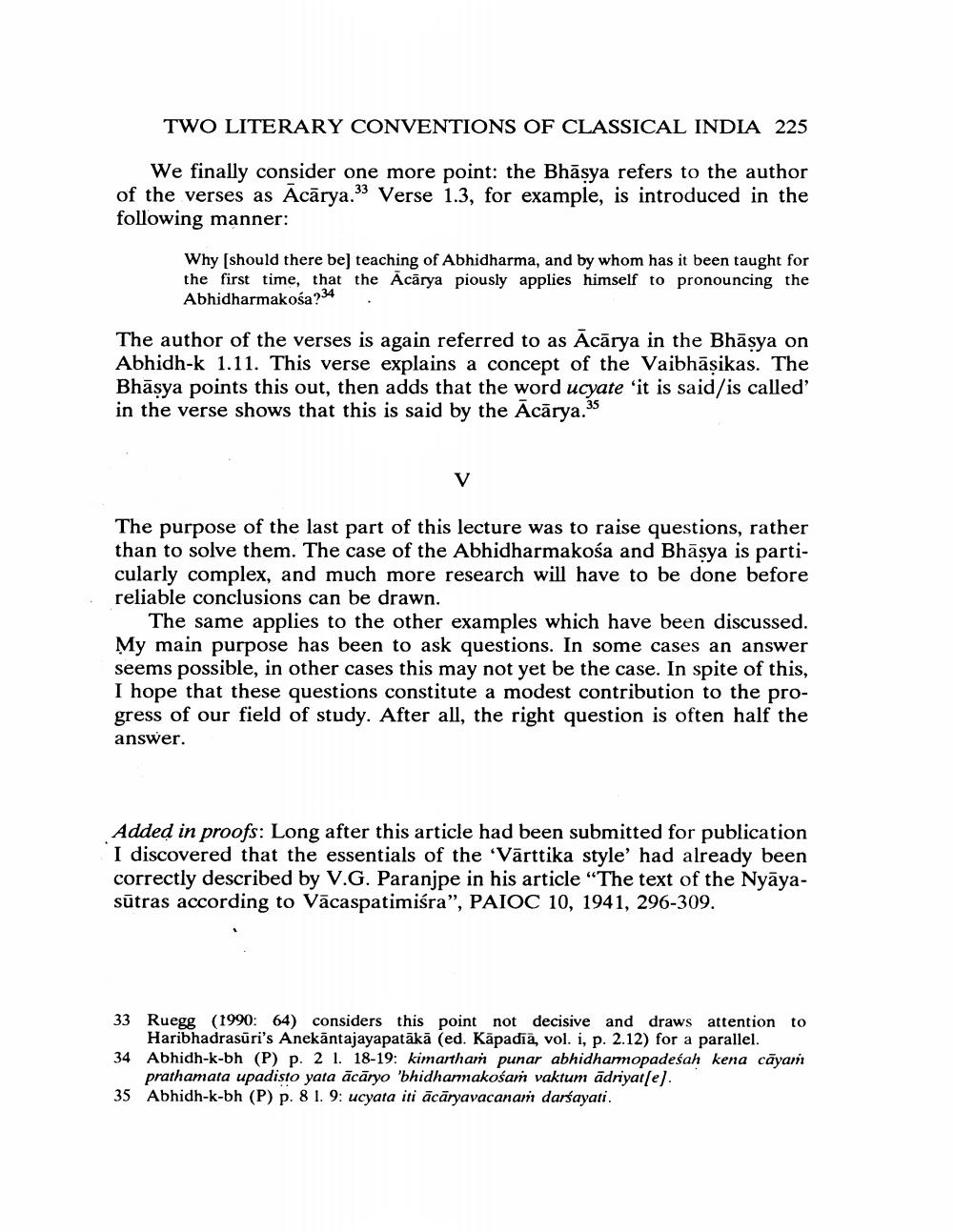________________
TWO LITERARY CONVENTIONS OF CLASSICAL INDIA 225
We finally consider one more point: the Bhāsya refers to the author of the verses as Ācārya.93 Verse 1.3, for example, is introduced in the following manner:
Why (should there be) teaching of Abhidharma, and by whom has it been taught for the first time, that the Acārya piously applies himself to pronouncing the Abhidharmakośa?34
The author of the verses is again referred to as Acārya in the Bhāsya on Abhidh-k 1.11. This verse explains a concept of the Vaibhāsikas. The Bhāsya points this out, then adds that the word ucyate 'it is said/is called' in the verse shows that this is said by the Acārya.95
The purpose of the last part of this lecture was to raise questions, rather than to solve them. The case of the Abhidharmakośa and Bhāsya is particularly complex, and much more research will have to be done before reliable conclusions can be drawn.
The same applies to the other examples which have been discussed. My main purpose has been to ask questions. In some cases an answer seems possible, in other cases this may not yet be the case. In spite of this, I hope that these questions constitute a modest contribution to the progress of our field of study. After all, the right question is often half the answer.
Added in proofs: Long after this article had been submitted for publication I discovered that the essentials of the 'Vārttika style' had already been correctly described by V.G. Paranjpe in his article “The text of the Nyāyasūtras according to Vācaspatimiśra”, PAIOC 10, 1941, 296-309.
33 Ruegg (1990: 64) considers this point not decisive and draws attention to
Haribhadrasūri's Anekāntajayapatākā (ed. Kāpadia, vol. i, p. 2.12) for a parallel. 34 Abhidh-k-bh (P) p. 2 1. 18-19: kimartham punar abhidharmopadeśah kena cāyari
prathamata upadisto yata ācāryo 'bhidharmakośam vaktum ädriyat(e). 35 Abhidh-k-bh (P) p. 8 1. 9: ucyata iti ācāryavacanam darśayati.




